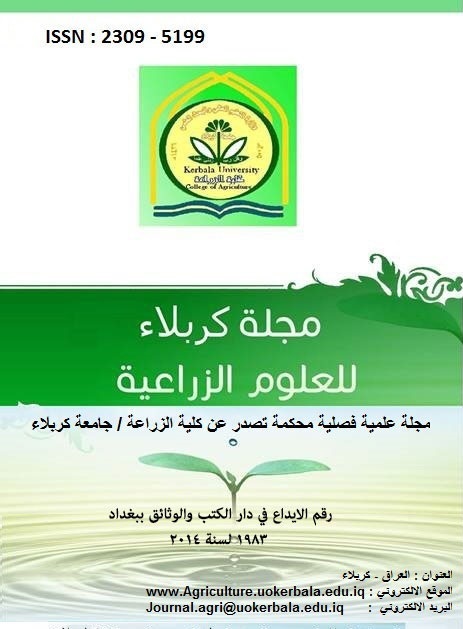Comparative the effect of using locally collected premix with some imported premixes in some productive characteristics of broilers (Ross 308).
DOI:
https://doi.org/10.59658/jkas.v4i4.309Abstract
The experiment was carried out in the poultry field of the Department of Animal Production Techniques at the Technical College of Musayyib for the period from 1/11/2016 to 5/12/2016, in order to study the effect of the premix, most of which were collected locally and compared with imported feed mixtures in some production characteristics, in this study, 240 one day old chicks Rose 308 was used The chicks were randomly distributed in to four equal experimental treatments , 60 chicks divided into two replicates (30 chicks . replicate-1) using 2.5% of the locally premix (T1) and compared with three premixes Wafi (T2), provimi (T3) and Max Care (T4), mixing and equipping the mixtures with their premixes to cover the requirements of the birds according to the Rose guide, which followed four stages of life (pre-starter from 1 - 10 days , starter from 11 - 20 days , grower from 21 - 30 days and finisher 31 – until Marketing), and using a ready-program, modern software (BEST MIX, 2016), version 3.03 of Cargil, the US company to make this premix, as well as when the installation of all 16 rations.
The results of the production characteristics of body weight, weight gain, feed consumption, and feed conversion rasio showed the possibility of using the premix of additives locally collected for the absence of significant differences in the cumulative rate of the studied traits between all the treatments.
Downloads
Published
How to Cite
Issue
Section
License
Copyright (c) 2017 Copyright (c) 2024 is the Author's article. Published by the Journal of Kerbala for Agricultural Sciences under a CC BY 4.0 license

This work is licensed under a Creative Commons Attribution 4.0 International License.
Licensing Terms
All articles are published under a Creative Commons License and will be directed to the Creative Commons Attribution 4.0 International License (CC BY 4.0) That permits use, distribution, and reproduction in any medium, provided the original work is properly cited. This license also allows the work to be used for commercial purposes.
Use by both non-commercial and commercial users
This content is licensed under a Creative Commons Attribution 4.0 International (CC BY 4.0) license, permitting use by both non-commercial and commercial users. Individual users may access, download, copy, display, and redistribute the articles to colleagues, as well as adapt, translate, and text- and data-mine the content, subject to the following conditions:
- The author's moral rights, including the right of attribution and the right to protect their work from derogatory treatment, are respected.
- Where content in the article is identified as belonging to a third party, users must ensure that any reuse complies with the copyright policies of the owner of that content.
- If the article content is reused for research or educational purposes, users should maintain a link to the appropriate bibliographic citation, including the DOI and a link to the published version on the journal's website.

